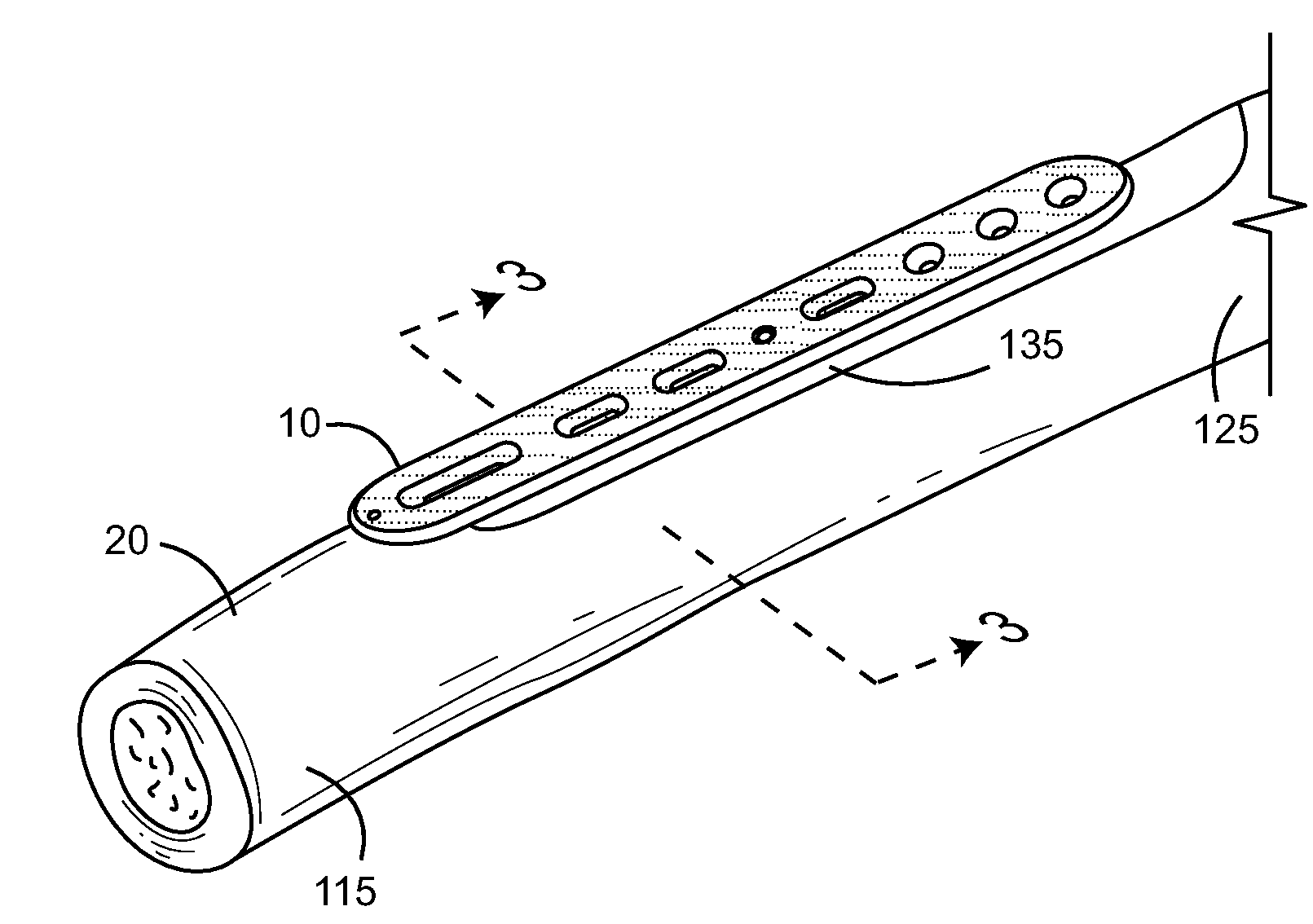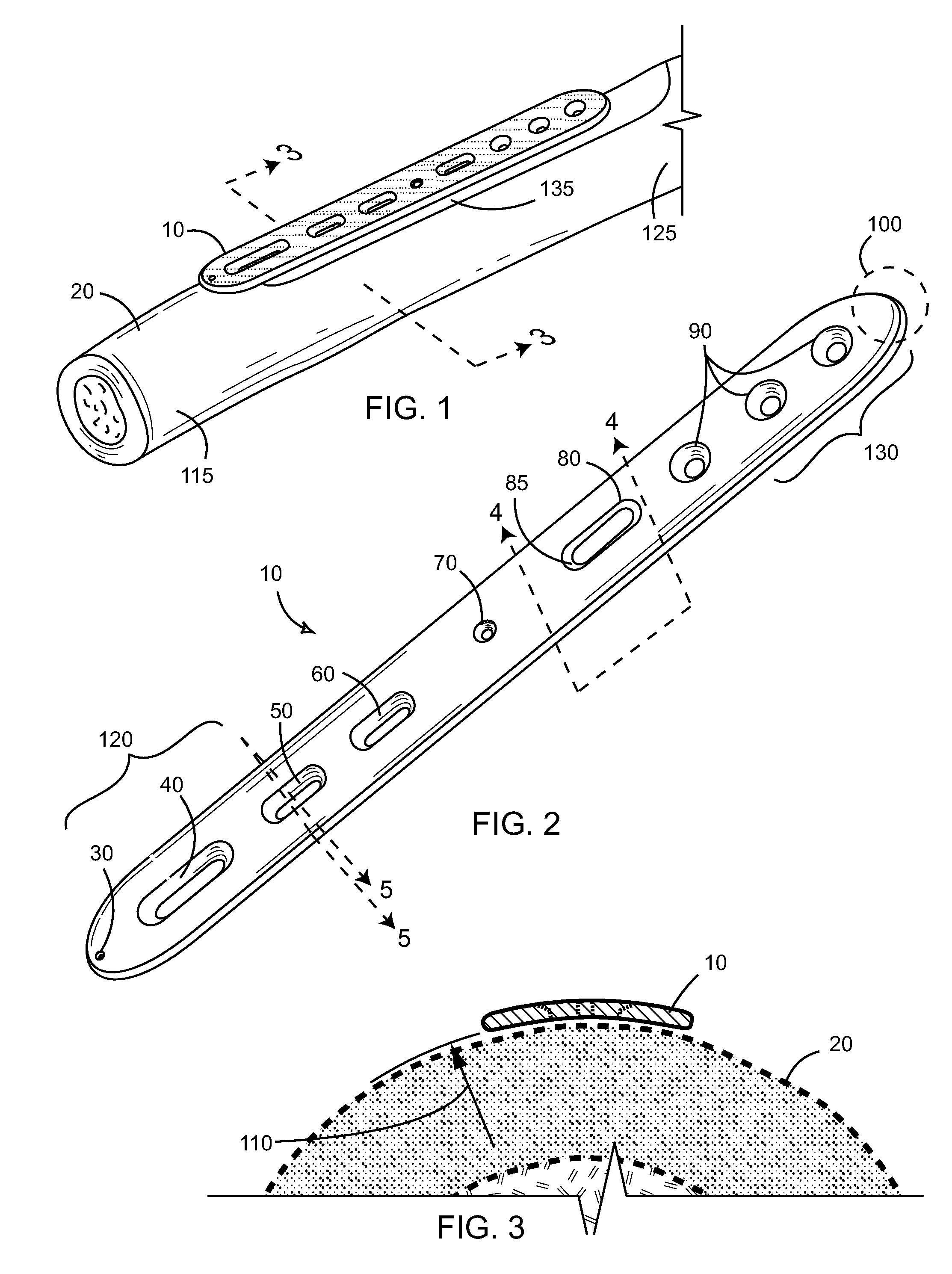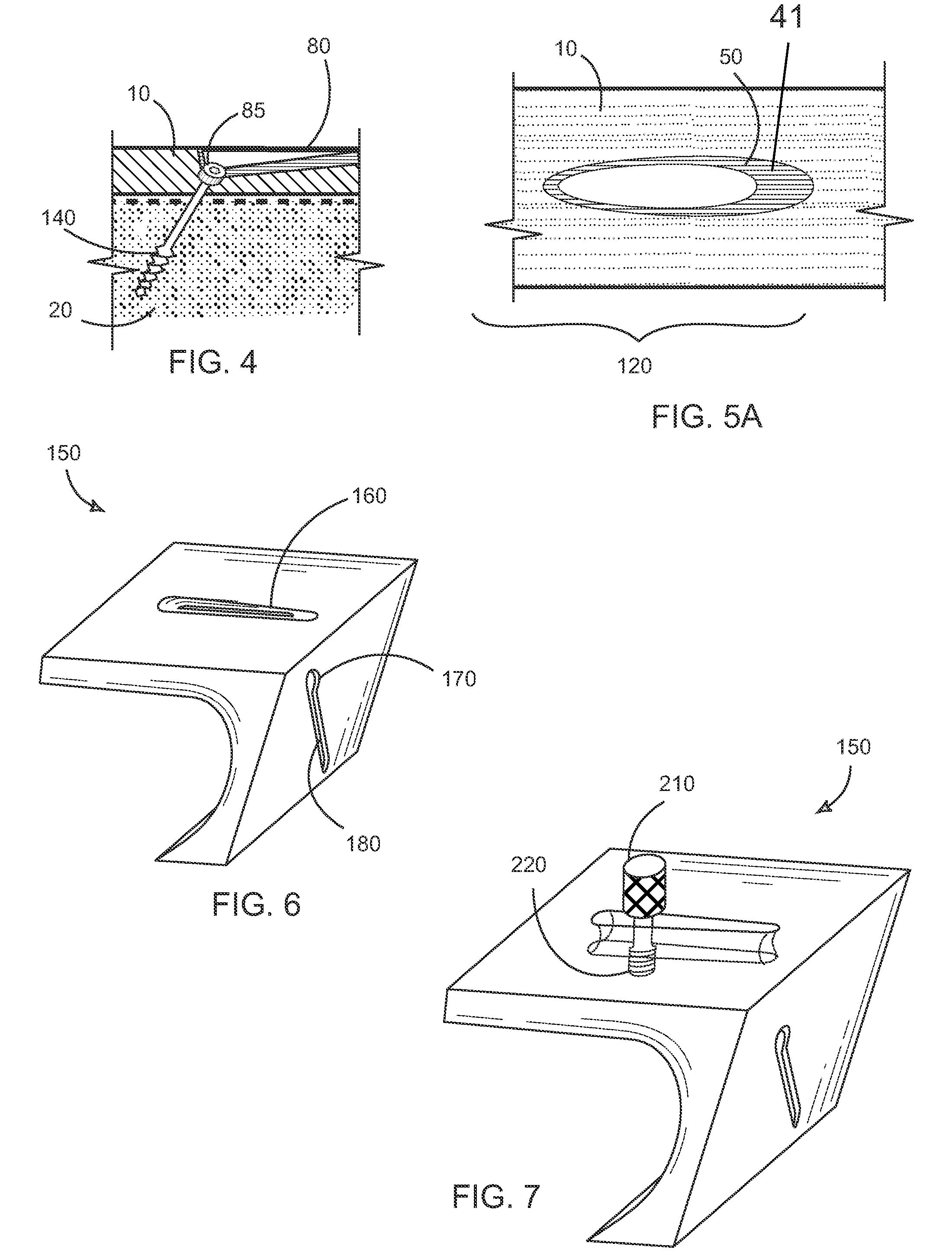Ulnar osteotomy plate including increased compression
a technology of osteotomy plate and ulnar bone, which is applied in the field of medical implants, can solve the problems of reducing the effect of osteotomy and reducing the difficulty of surgery, and achieves the effect of shortening the procedure and shortening the procedur
- Summary
- Abstract
- Description
- Claims
- Application Information
AI Technical Summary
Benefits of technology
Problems solved by technology
Method used
Image
Examples
Embodiment Construction
[0044]In one embodiment of the present invention, a system for performing an ulnar shortening osteotomy is disclosed. The system includes an elongated metallic plate having tapered ends, wherein the plate is concave in a direction perpendicular to a main axis of the plate. The ulnar osteotomy plate includes a plurality of holes along the main axis of the plate, wherein the plurality of holes includes a substantially elliptical hole with a beveled interior edge located on a first side of the plate and a threaded hole located on a second side of the plate. The system also includes a first screw for insertion into one end of the elliptical hole and further into an ulna underneath the plate, wherein the first screw includes a beveled edge underneath a head such that when the beveled edge of the first screw contacts the beveled interior edge of the elliptical hole, there results a force along the main axis towards the first side. The system also includes a second screw for insertion into...
PUM
 Login to View More
Login to View More Abstract
Description
Claims
Application Information
 Login to View More
Login to View More - R&D
- Intellectual Property
- Life Sciences
- Materials
- Tech Scout
- Unparalleled Data Quality
- Higher Quality Content
- 60% Fewer Hallucinations
Browse by: Latest US Patents, China's latest patents, Technical Efficacy Thesaurus, Application Domain, Technology Topic, Popular Technical Reports.
© 2025 PatSnap. All rights reserved.Legal|Privacy policy|Modern Slavery Act Transparency Statement|Sitemap|About US| Contact US: help@patsnap.com



